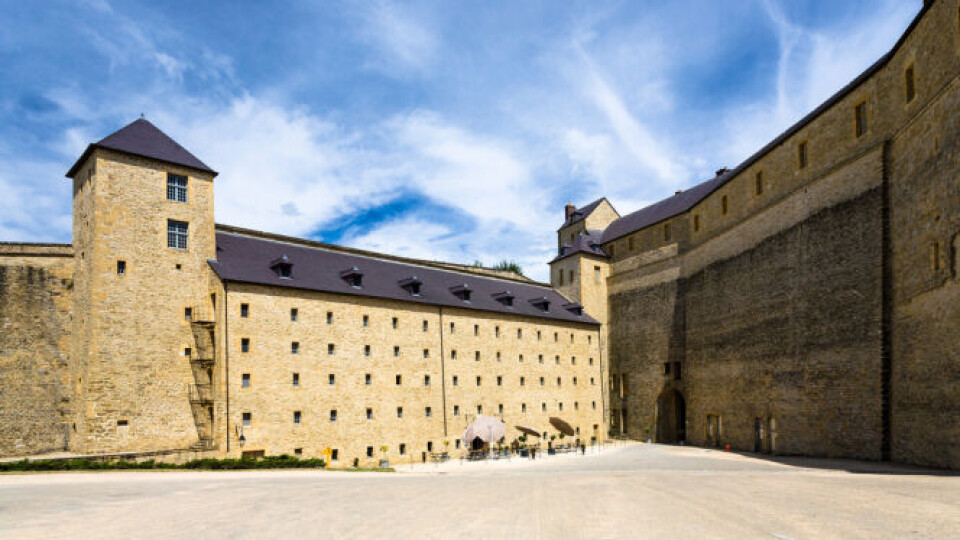-
Step back in time for some ‘dinosaur’ planting in your French garden
Captivated in the garden this month by one species of plant that dates back 200 million years, and another which is one of the oldest flowering plant families on the planet
-
Classic French recipe with an exotic twist: caramelised onion soup
A dish inspired by the travels of two Paris chefs
-
HPI final season: the end of a French TV phenomenon
Comedy-thriller starring Audrey Fleurot that gripped France airs final episodes
Photos: the massive castle voted France’s most popular monument 2023
Why is this site so important for the French public? We look at the history of France’s new favourite national monument

The Château Fort de Sedan was this week voted France’s favourite national monument by viewers of the popular TV show Le Monument préféré des Français.
The France 2 programme each year presents a host of castles, fortresses, monasteries, landmarks, famous ships and architectural curiosities with a winner selected by popular vote.
The castle beat 13 rivals in the final to win the coveted title and, although it comes with no monetary prize, the prestige and attention it attracts is enough to boost visitor numbers and show that the site is well regarded, well managed and well maintained.
#TempsForts @France3tv
— France TV Pro (@francetvpro) August 22, 2023
✨ « Le Monument préféré des Français »@bernstephane vous accueille à la cité internationale de la langue française pour vous dévoiler le classement 2023 !
▶️ Mer 13/09 à 21.10 | France 3 et https://t.co/9jFuek1f4j pic.twitter.com/sLBUIpC0CP
What is the history of Château Fort de Sedan?

The castle is an imposing fortress that looms over the town of Sedan in Ardennes from atop a rocky outcrop within a bend of the Meuse river. It is considered a château fort, a castle, rather than a château, which in French refers to a unfortified residence.
Construction on the site began in 1424 when Count Évrard de La Marck, a wealthy merchant and owner of 17 castles in France, decided to take hold of the strategic position between the Holy Roman Empire and France.
The castle grew to keep pace with advances in siege engines and artillery over the centuries. Today, it is arguably the largest military castle in Europe, with a total area of 35,000m².
There are larger castles by area, notably Malbork Castle in Poland at (143,591m²), or even Windsor Castle (54,835m²), however the French assessors argue that it is the area within a castle’s contiguous fortifications that determine its size. Malbork castle’s fortifications are not contiguous, and Windsor Castle has too many windows to be considered fortified.
The site is above all noted for the size and strength of its fortifications.
The walls, tipped with pointed towers and a slate roof, are 30m high and between 7 and 25m thick and surrounded by a bastion fort to protect them from cannon fire. For many years it was impregnable.
When Holy Roman Emperor Charles Quint brought 34,000 men to lay siege to the castle in 1521, he decided an attack would be folly.
Thanks in large part to this strength, King Henri II recognised Sedan as an independent Principality in 1547.
Raising the white flag
However, the day after the decisive defeat, the débacle, at the Battle of Sedan on September 1, 1870 Emperor Napoleon III raised the white flag of surrender from the castle.
Again, during WWI the castle was occupied by the German Empire and used as a supply depot, hospital and prison.
During the wars of the 19th and 20th centuries the castle, considered unsuited to modern warfare, was largely undamaged.
The army surrendered the castle again in 1962, although this time it was to the municipality of Sedan.
‘Wonderful exposure’
Today, it hosts colourful events all year round, including a medieval festival, tourneys, nocturnal visits with torches and even a Playmobil exhibition.
On being voted Le Monument préféré des Français, Sedan castle’s manager Melaine du Merle said: “I feel so much pride. We did not believe it could happen. This is something that the people of the Sedan, the Ardennes and the Grand Est all deserve, we all played our part.”
Over 100,000 visitors have already been to the castle in 2023, a significant increase from the previous record of 80,000 in 2022. Sedan mayor Didier Herbillon told France Bleu that the programme had been “wonderful exposure”.
The programme has been running since 2014, with previous winners including the Royal Monastery of Brou (Ain), the Belfry of Arras (Pas-de-Calais) and Belfort Citadelle (Territoire de Belfort).
1,601,000 people tuned in for the final, however the voting numbers have not been made public.
In second and third place were Cluny Abbey (Saône-et-Loire) and Chaalis Abbey (Isère).
Related articles:
‘France’s favourite village’: See 14 contenders for this year’s vote
Seven facts about France's Mont-Saint-Michel abbey as it turns 1,000
France will win Notre-Dame rebuild challenge, says general in charge
France's geographical heart: where does the country's centre lie?
























